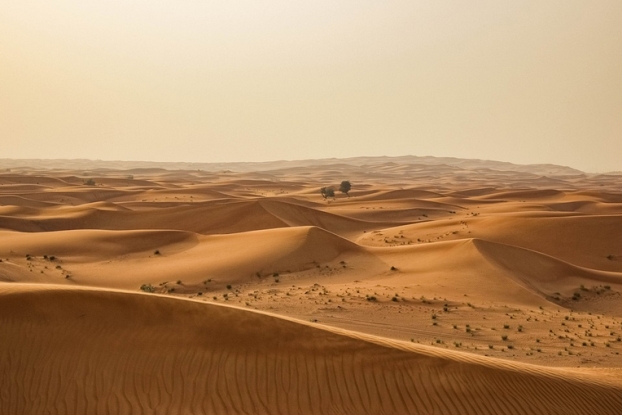“The journey you propose is impossible. You will all die…” – Esa Polta, an elder Uyghur tribesman and a camel handler.
Taklamakan Desert, situated in the Tarim Basin in the Xinjang Uygur Autonomous Region, China is legendary for it’s unforgiving sand dunes rising to 1000 feet, sand dunes that shape shift relentlessly, blinding sandstorms, and punishing temperature extremes. For centuries Taklamakan – which is referred as ‘The Desert of Death’ by the natives and meaning something along the lines of “Go in & you won’t come out“ in Uyghur dialect – has taken countless caravans of merchants, soldiers, pilgrims and explorers in to it’s vast shimmering ocean of sands never to return. The ancient “Silk Road” snaked its way around the edges of this desert. An attempt to cross this desert was for centuries regarded as something impossible, but Charles Blackmore, a former British Army man and explorer in a show of the extremes of human endurance and gritty determination conquered this desert with an expedition that traveled it’s entire length of 1280 Kms in 1993. This book is the story of the extraordinary resolve and the events behind this entire journey narrated in all its glory and harshness.
Charles Blackmore, whose other successful expeditions include a 500 mile march retracing the route of the British Army’s 1808 retreat to Corunna in Spain and a 700 mile retracing using camels of T.E. Lawrence’s exploits in the Arab Revolt during the First World War, chose this quest of crossing the Taklamakan after reading about the challenges of such a journey and about the dozens of previous expeditions which had to abort due to the extreme harshness (Sir Aurel Stein’s and Sven Hedin’s expeditions for example) of the terrain. Taklamakan’s formidable reputation drew Charles Blackmore – who craved for the immense freedom of the desert landscape – to the challenge like a moth to the flame and in September 1993 he led a small team of 15 members – 4 British, 1 American, 4 Chinese (including some political officials) & 6 Uyghur tribesmen who knew the fringes of this desert as camel handlers– and 30 Bactrian camels from the town of Markit along an east-west course right across the entire length of the desert.
This book is a no-nonsense, candid and engaging commentary on this arduous and unprecedented journey told from the author’s perspective and provides the reader with a great deal of insights into the geographical and geological layout of this desert, its surface conditions and extremities of its weather. The author places a level of balance on describing both the punishing landscape that they journey on and the impact it has on the team members of the expedition which makes the narration both adventurous as well as educational. The scorching white heat of the day time journey, the polar temperatures of the desert nights, the dehydration followed by mood swings, howling dust storms that literally soaks one in gritty sand grains, the toll of such a harsh living condition on human body, the revolt of the animals against some of the most difficult geographical terrains, their misery over lack of water are all captured by the author in his narrative. The expedition coming across ‘a lost tribe of Taklimakan ’, a small band of goat herders who are settled in a valley with in the desert; finding some traces of ‘ the lost settlements of Niya ’, an ancient settlement dating back to 3rd century are some of the highlights from the journey
Charles Blackmore is bold enough to acknowledge some of the errors in judgment that he makes during the expedition, that causes misery to the other team members and the animals, which makes the narration more honest. At times his behavior and attitudes towards the Chinese members of the team and Uygher tribesmen can be seen as irritating or even downright chauvinistic, which makes an other wise perfect book lose some of its charm.
A recommended reading material for all lovers of true adventure narratives.





